

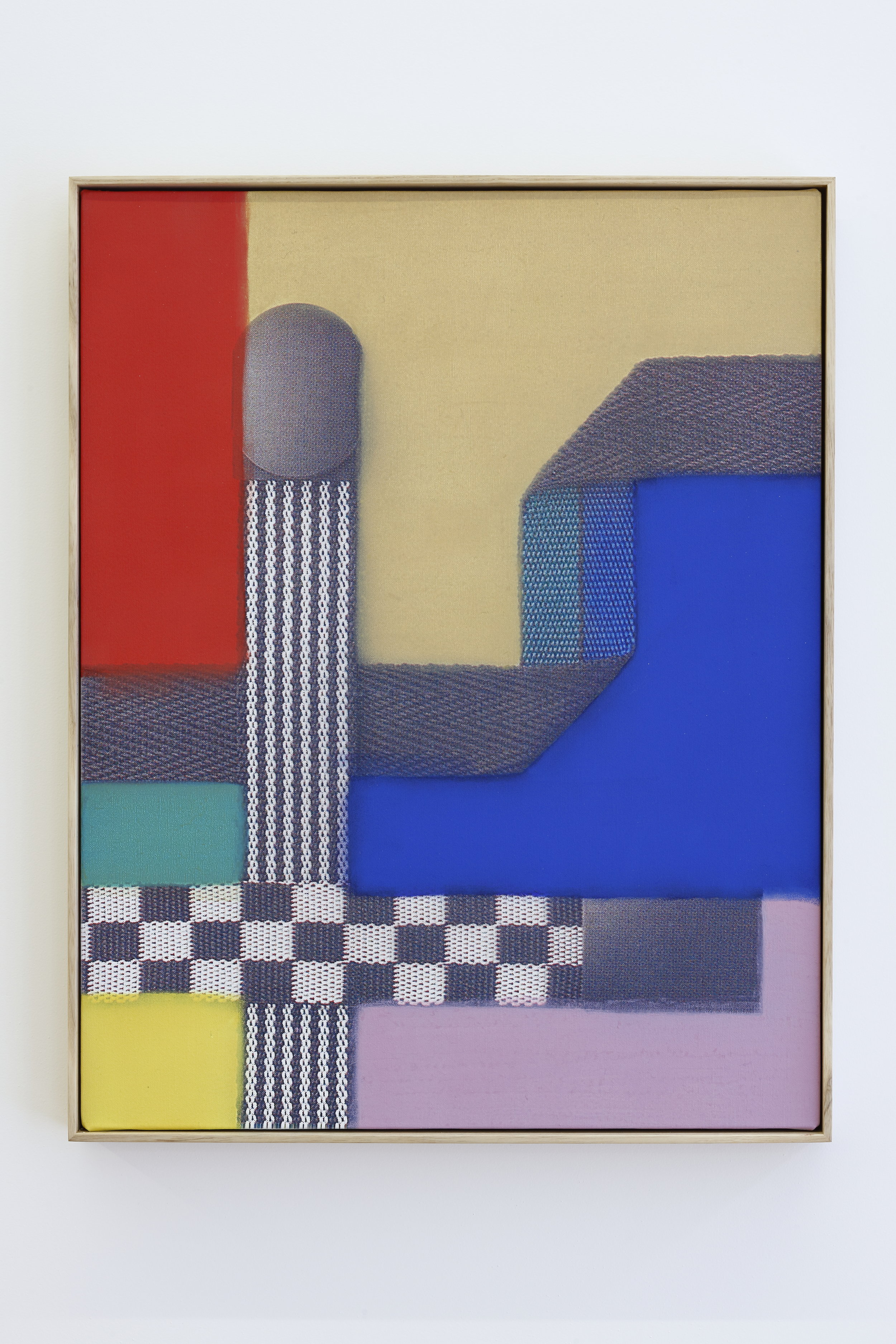

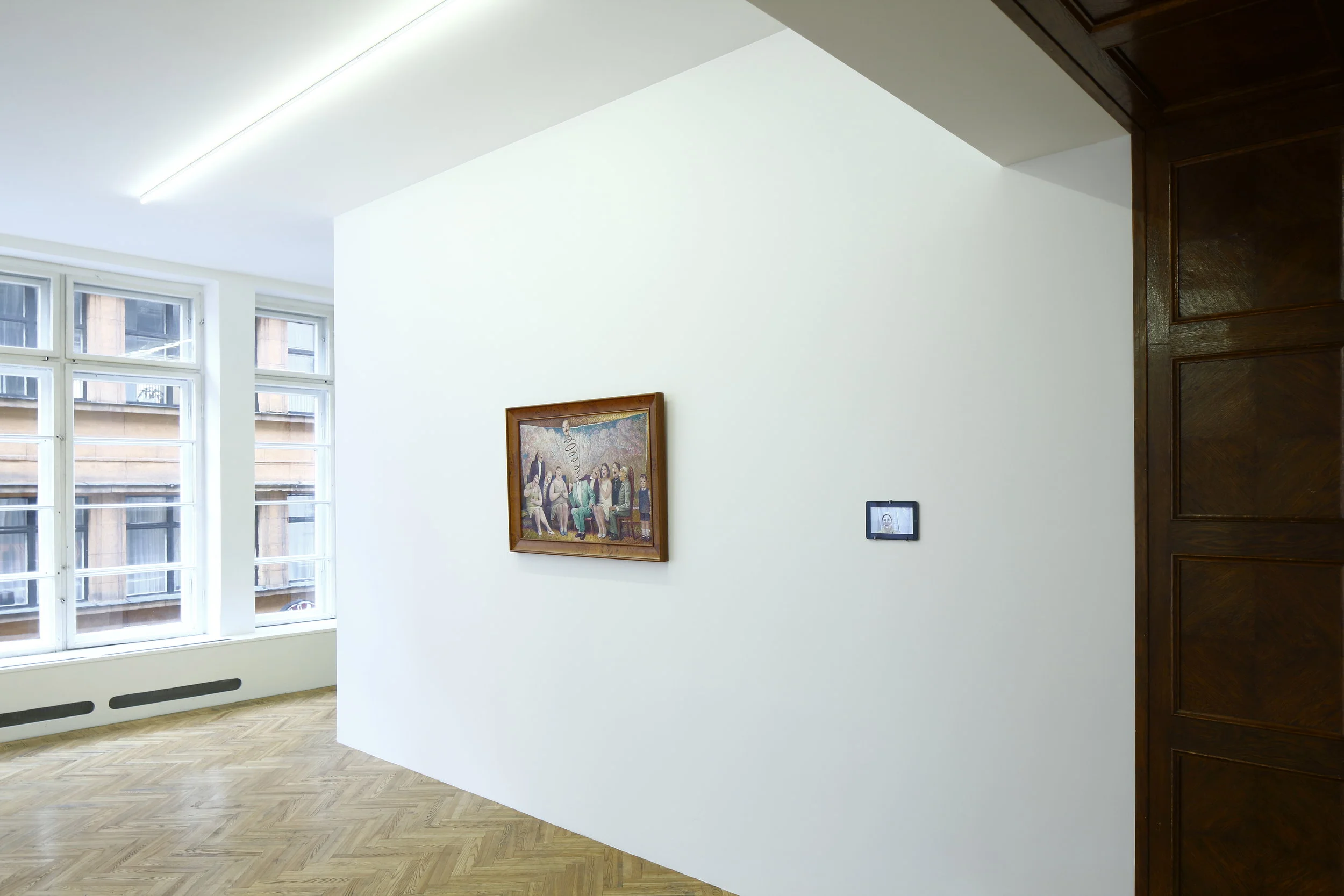

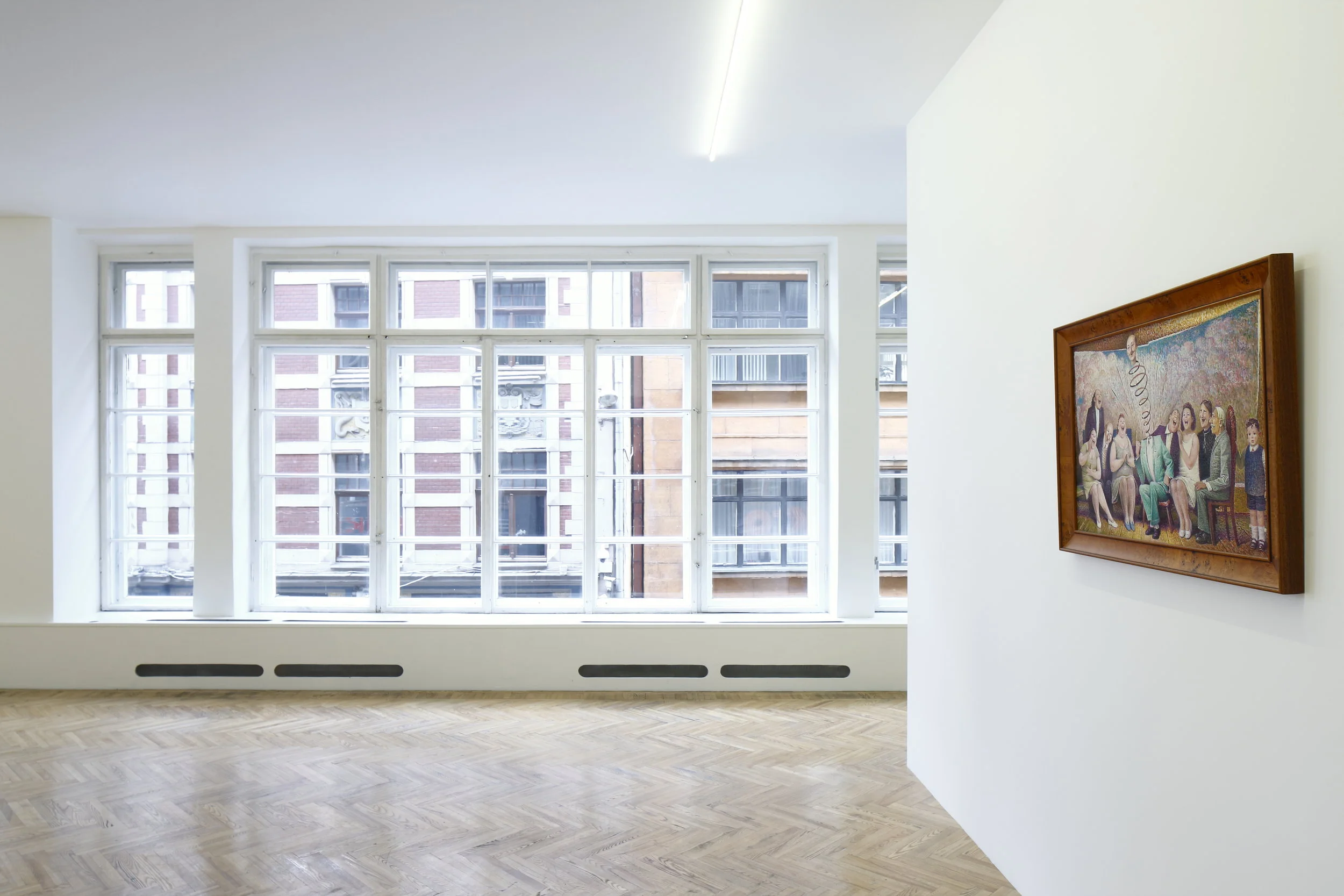
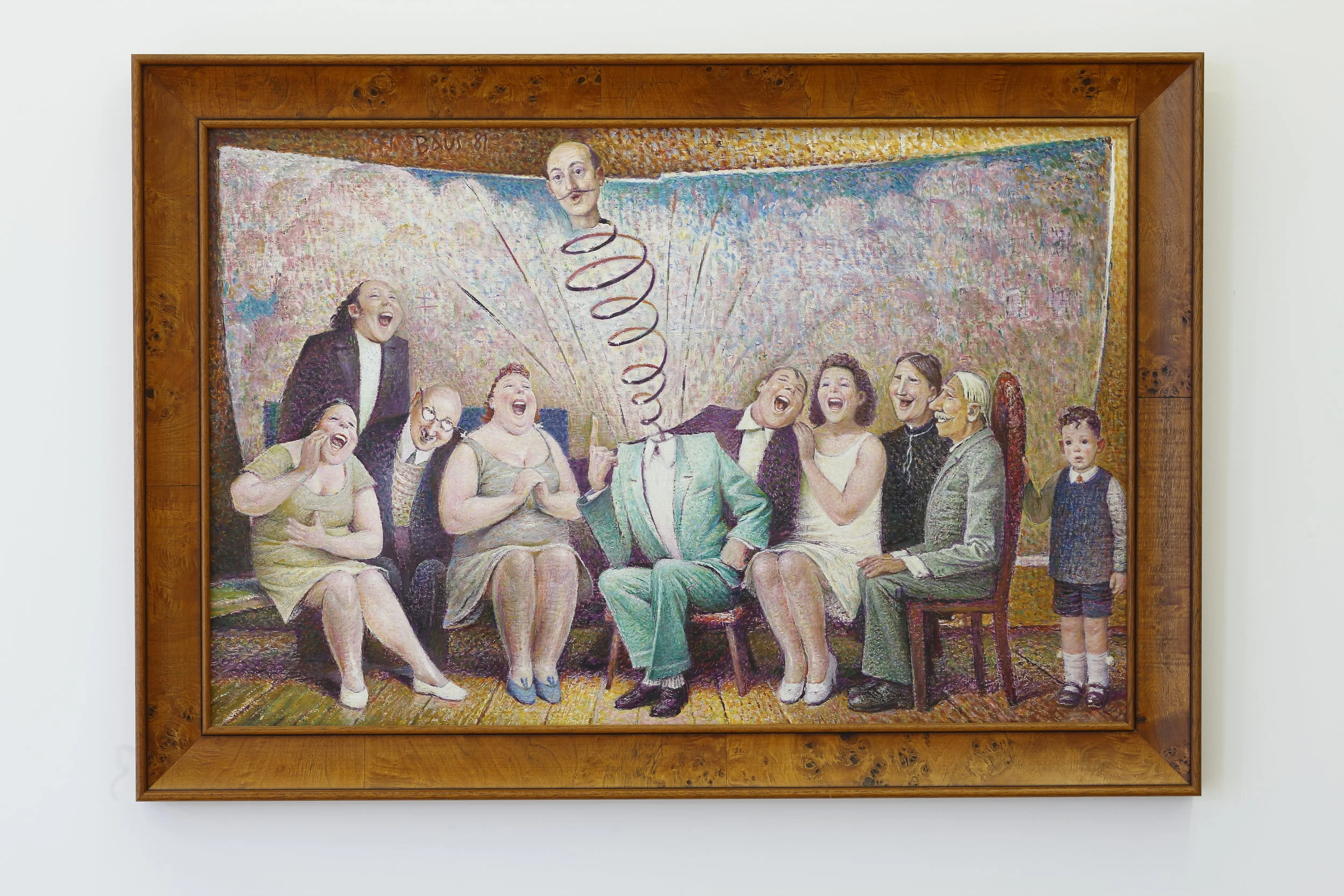


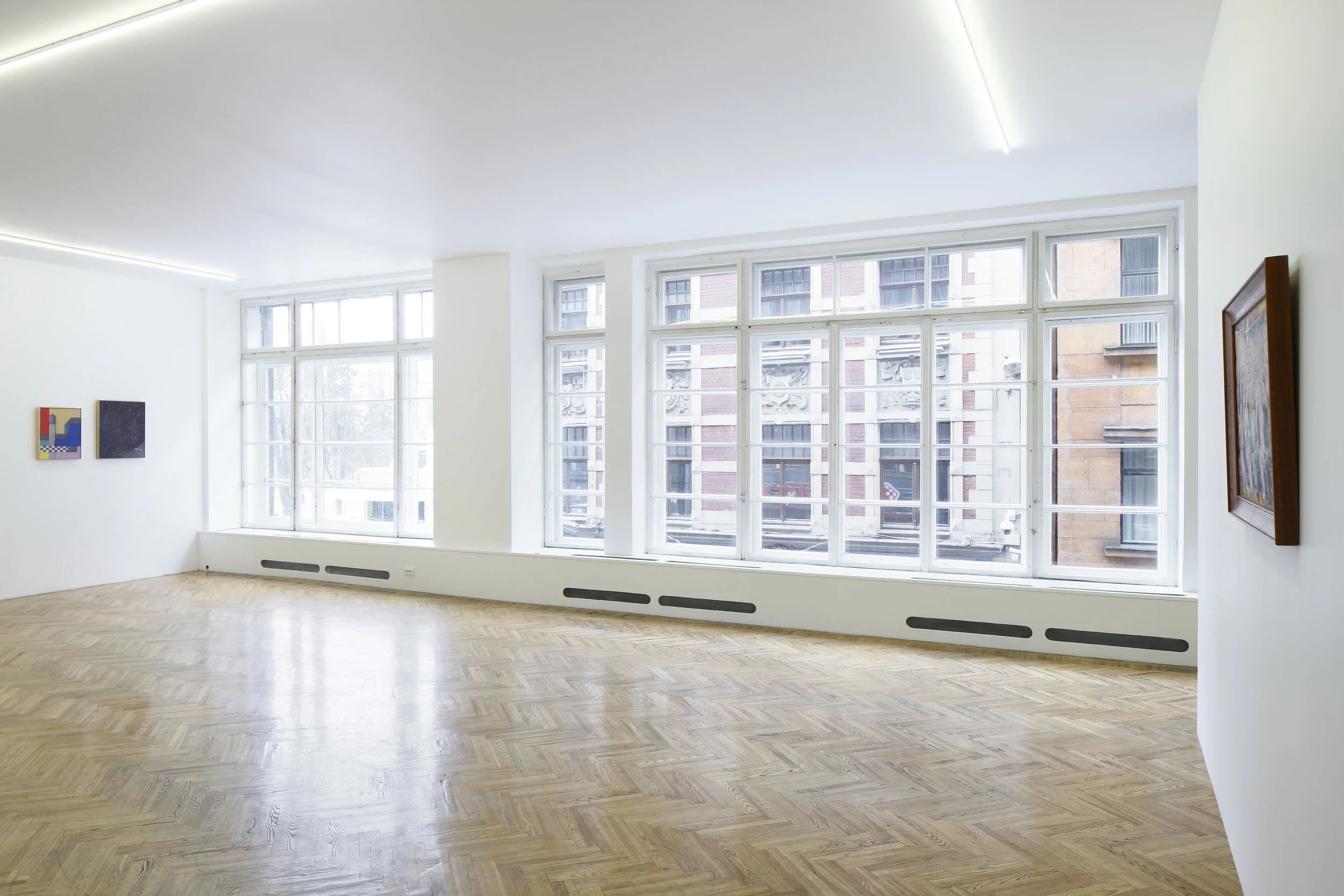
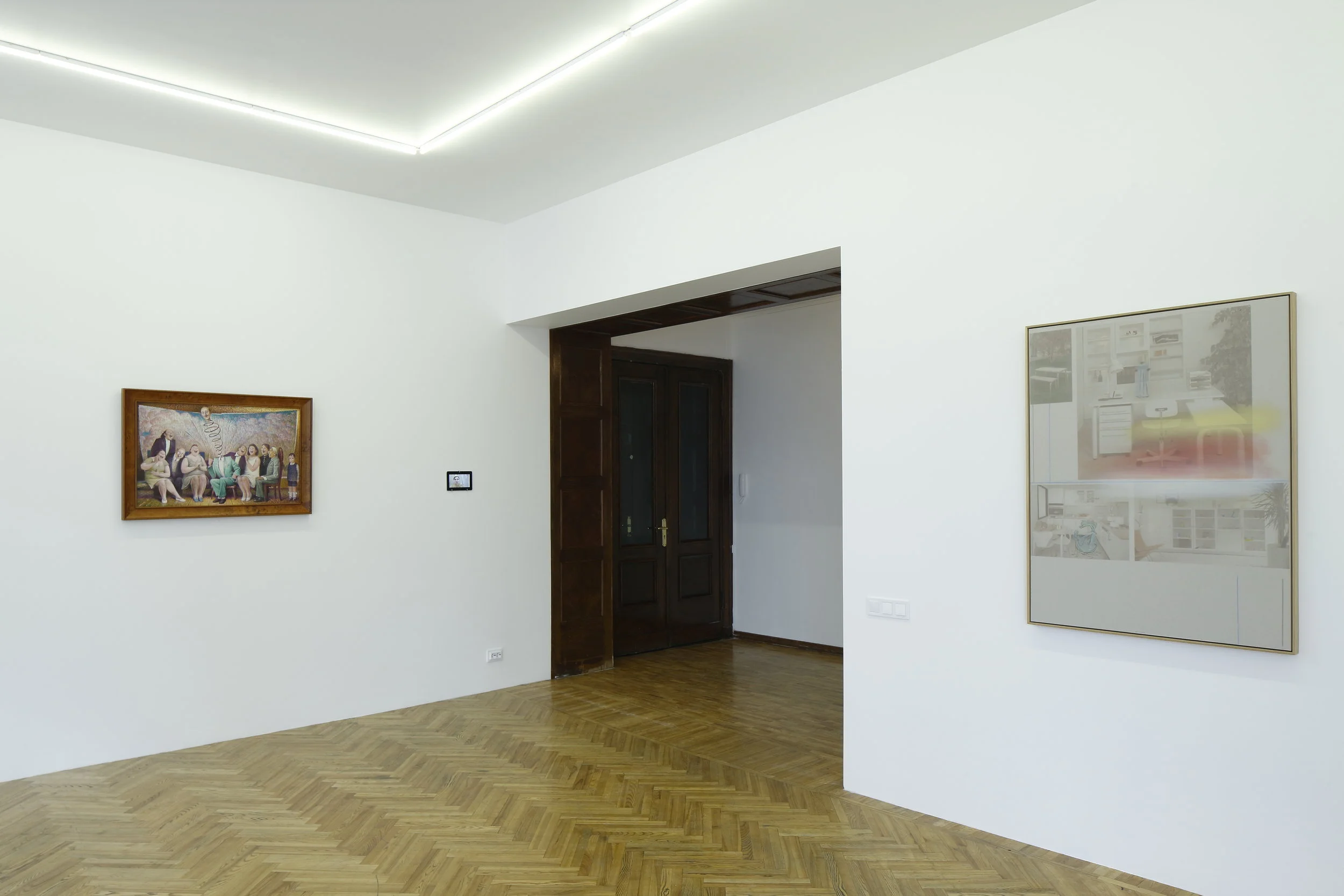


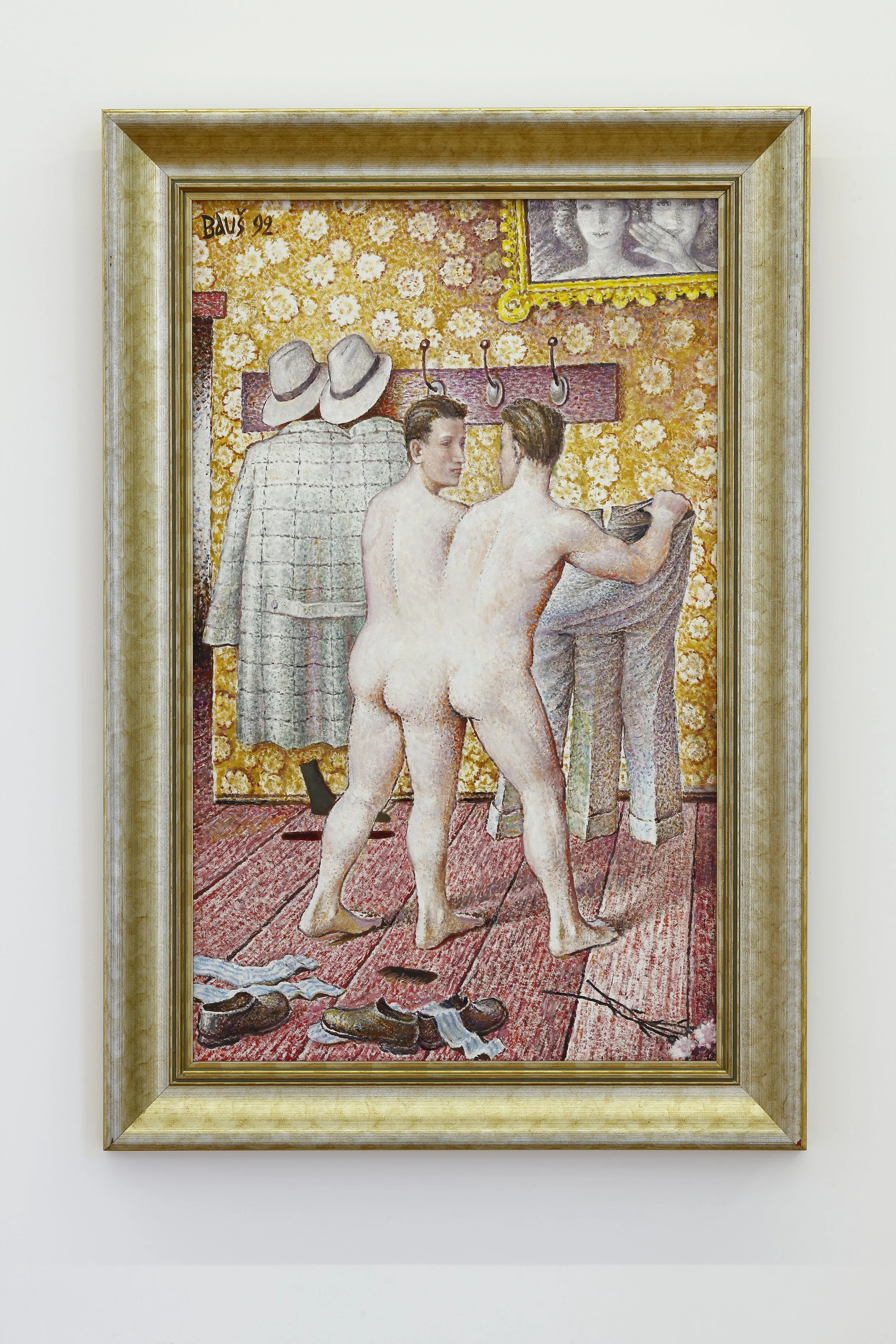


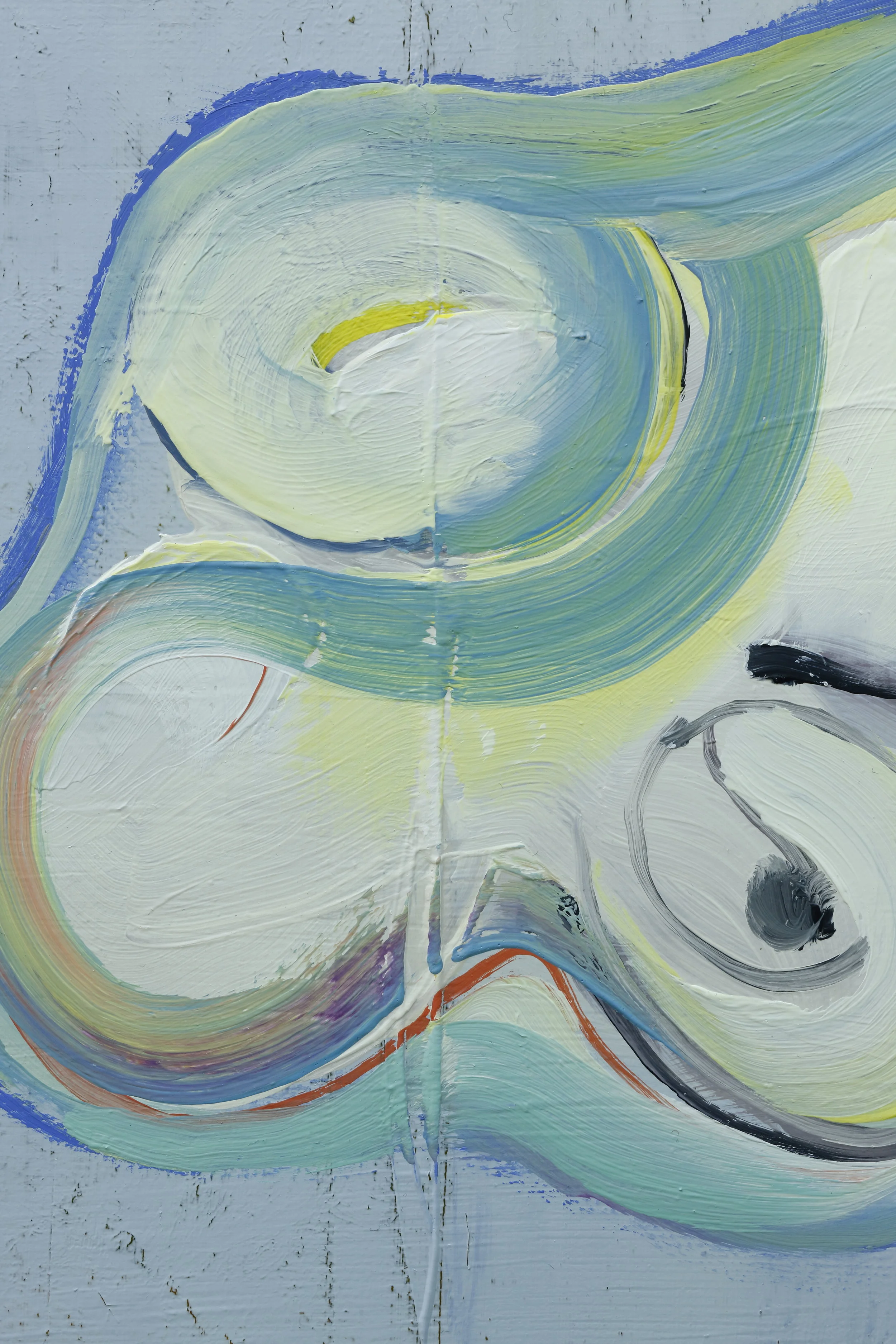



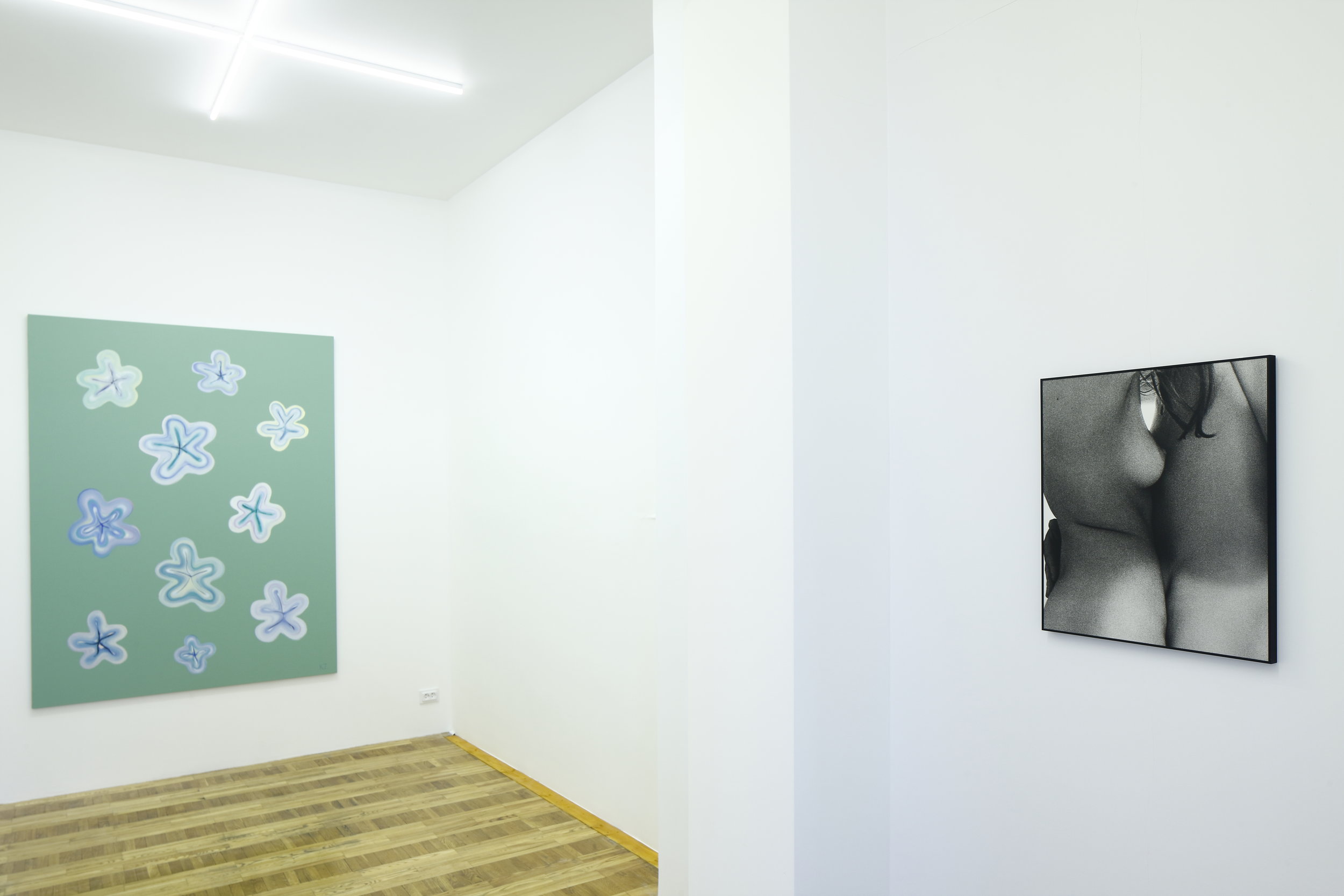
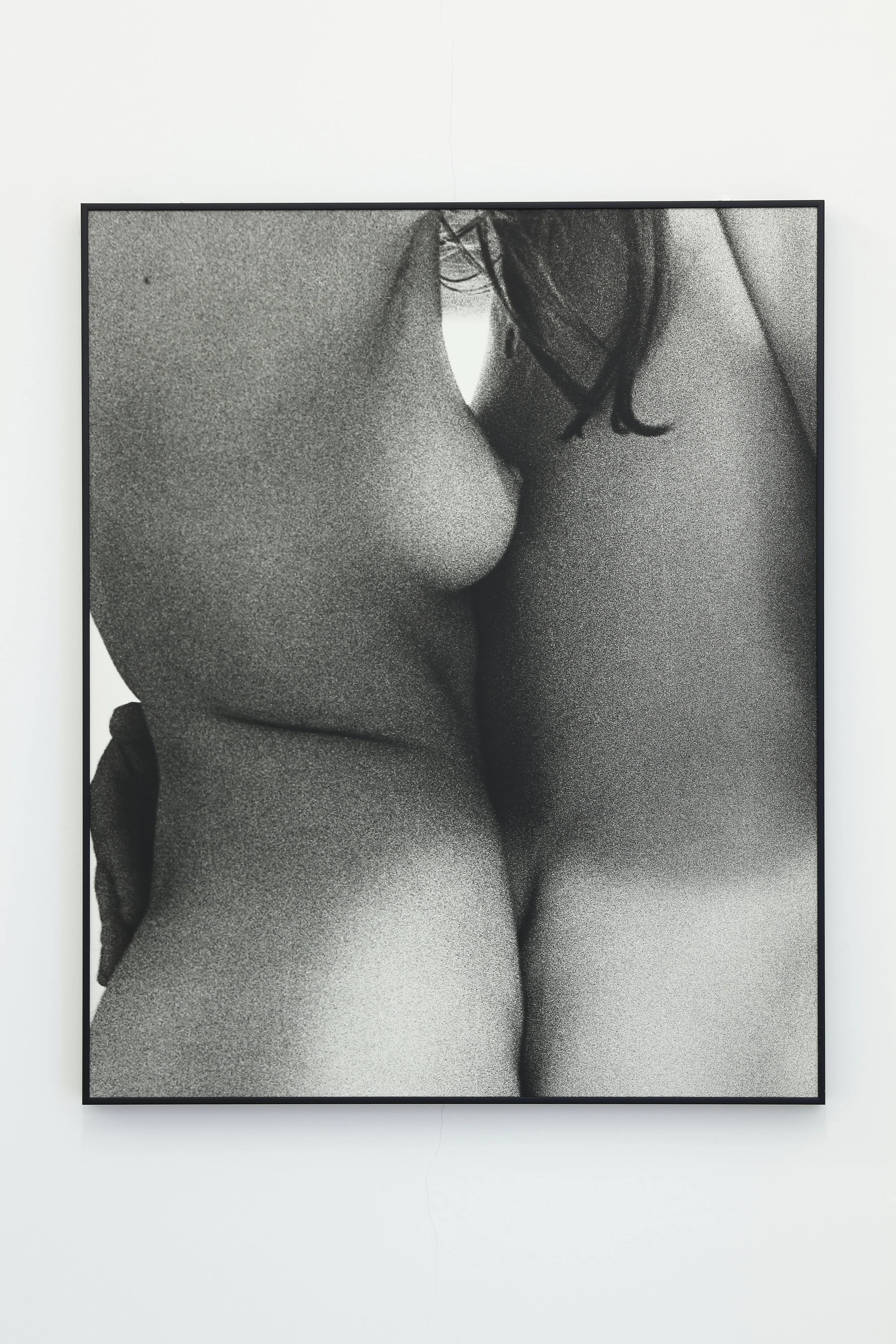
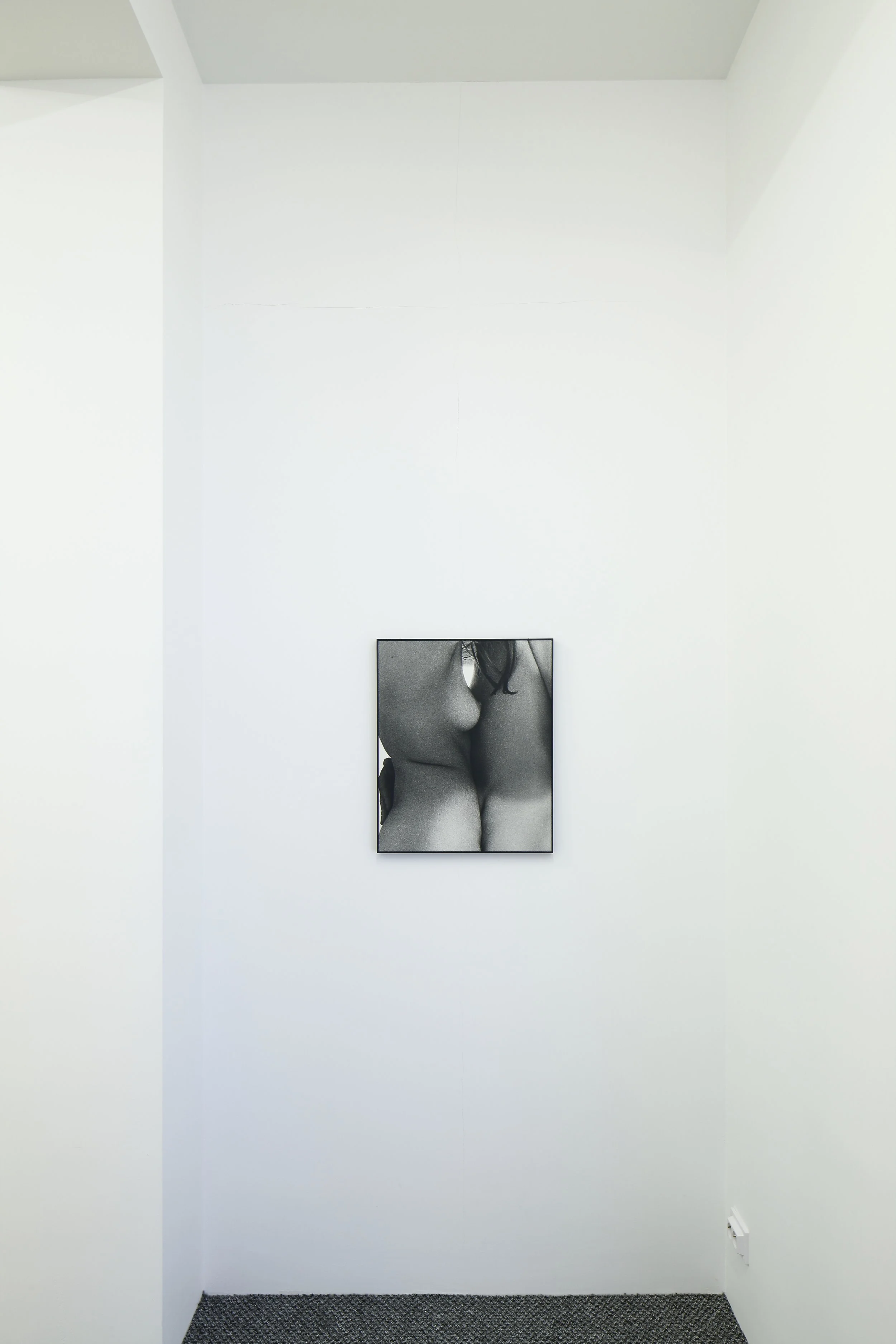
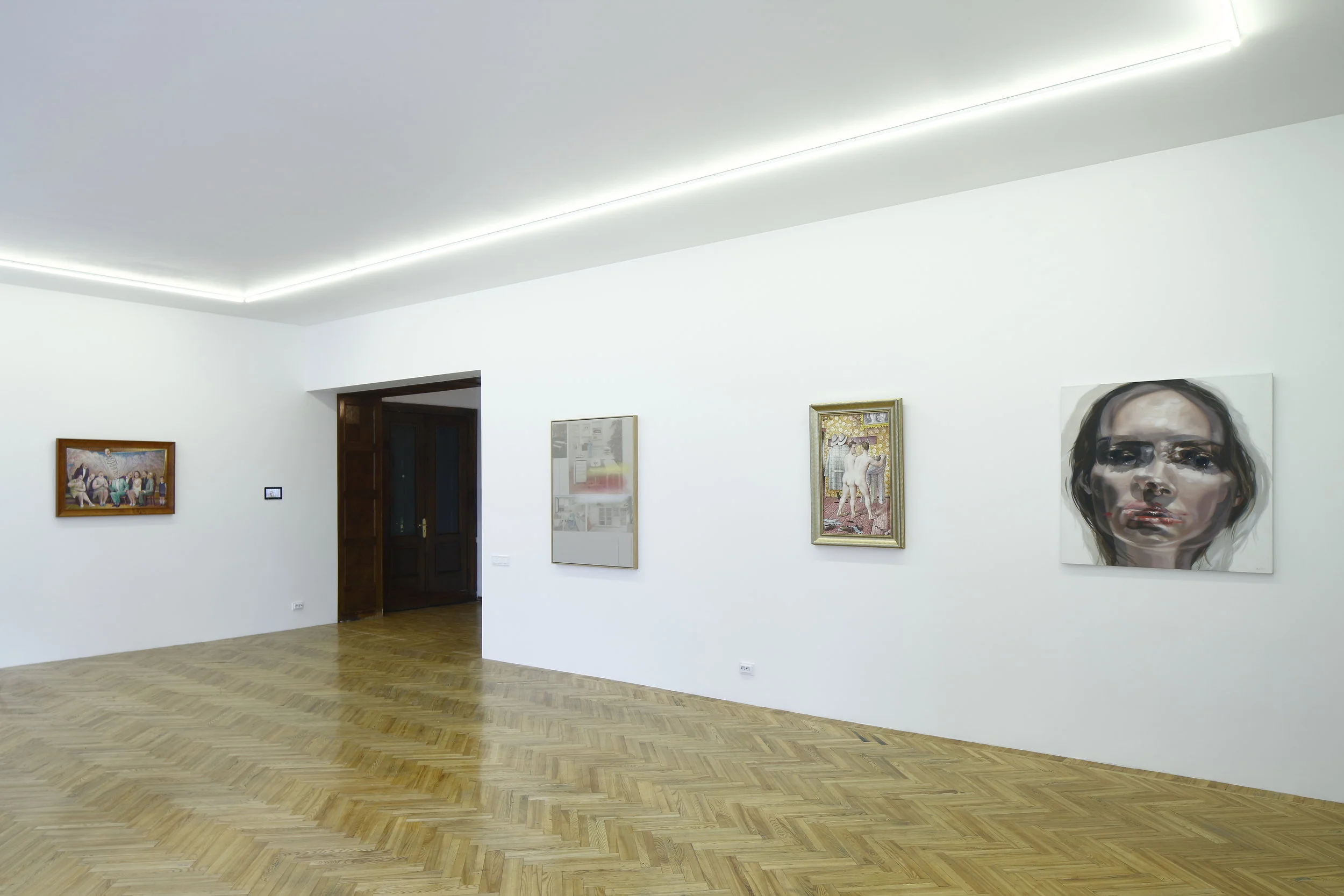
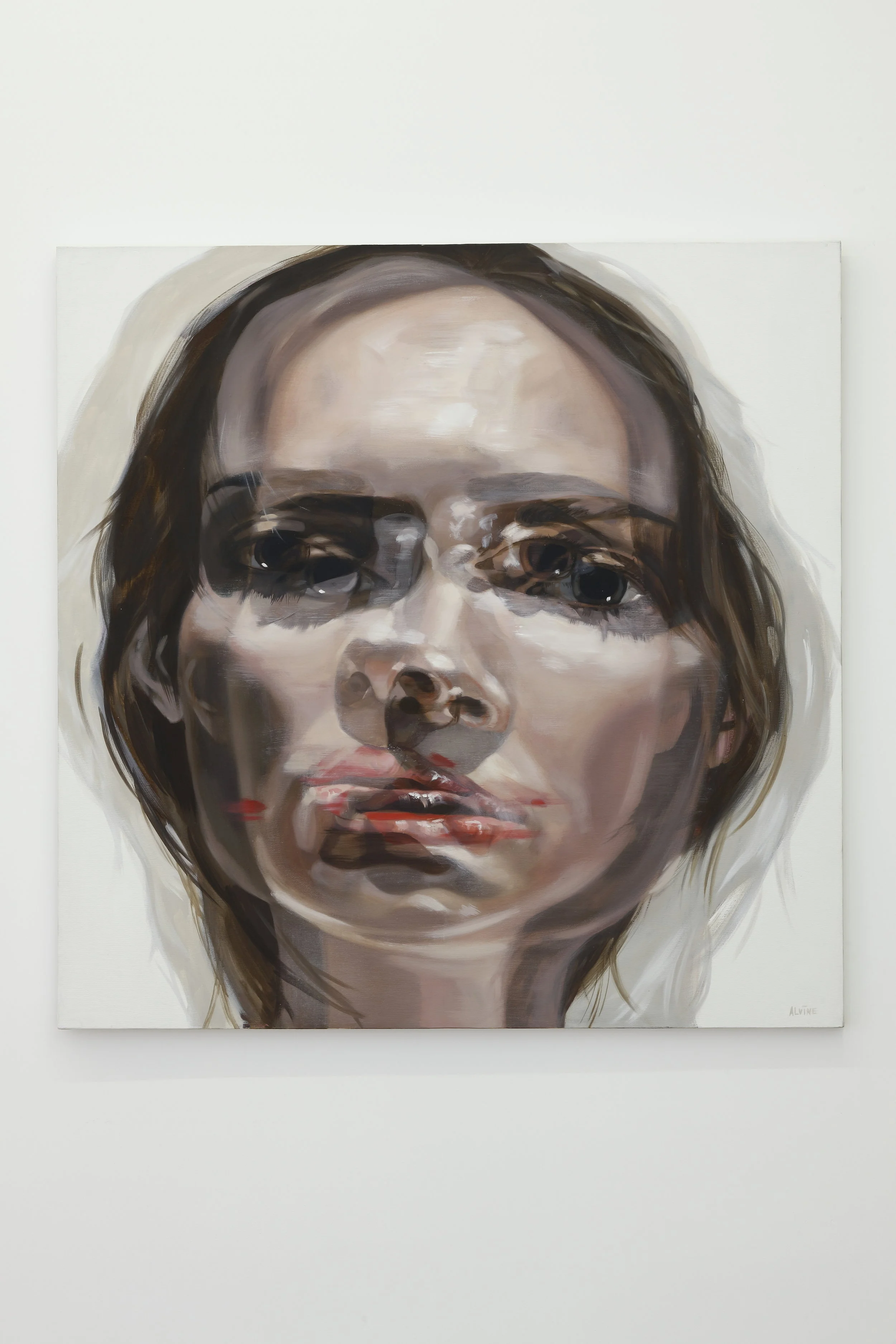


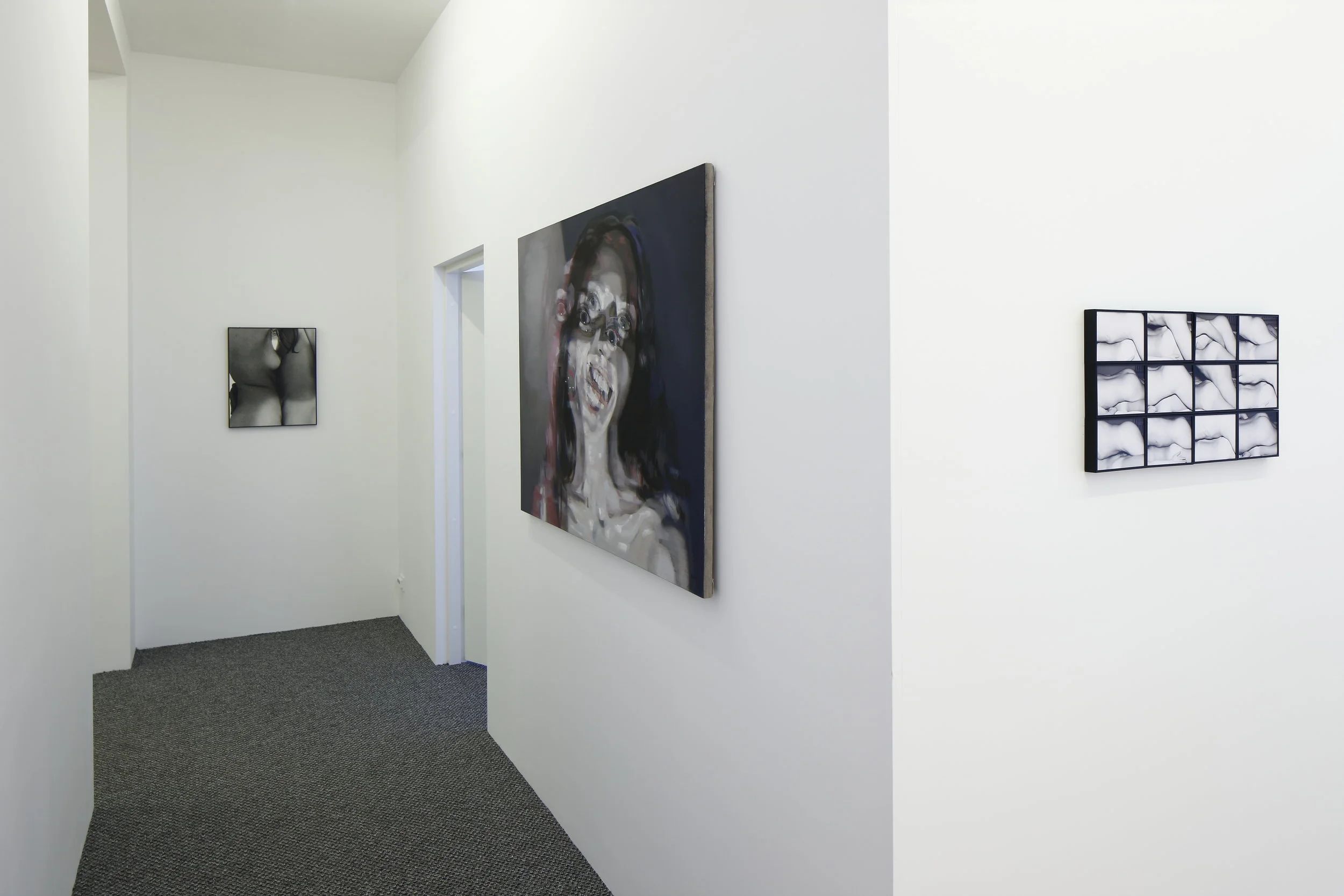
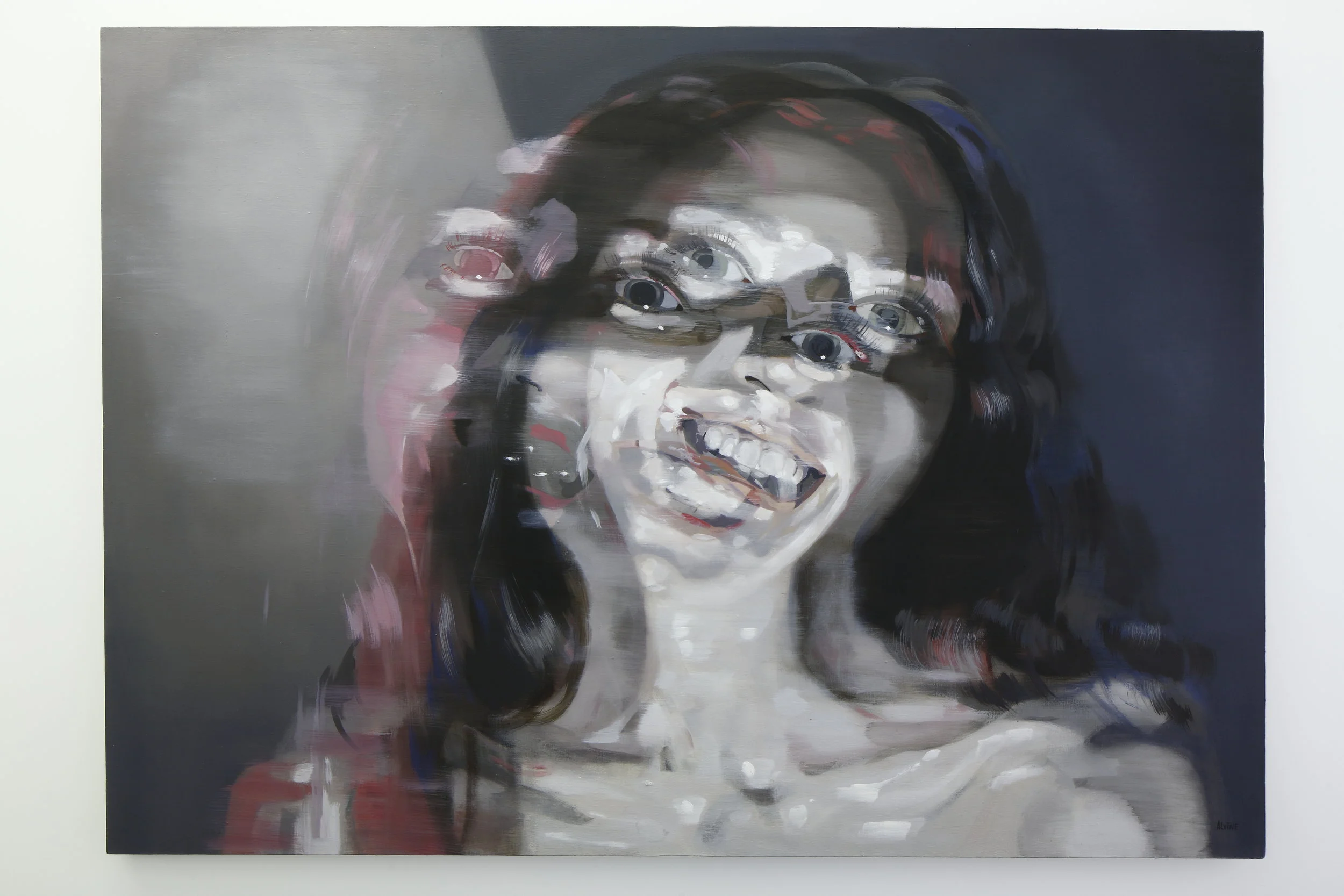


15.03.2019-18.05.2019
The group show is “Games that people play” (artworks by Auseklis Bauskenieks, Alvine Bautra, Gery Georgieva, Inga Meldere, NataliaLL, and Kaspars Zarins). Simultaneously on the right side of the gallery is a solo show titled “Plague” by Anna Salmane.
First group show has been made for people, about people. “Games that people play” coincides with the title of 1964 psychology book by Eric Berne, where he describes and analyses various human games and manipulations that are rather common behavioural patterns.
So, “All eyes on me” by Gery Georgieva (Bulgarian, living in London) illustrates the human craving of attention and eternal battle to reach the beauty ideals of the times, mocking the absurdity of the online realm (greetings, influencers). As next, one can see a 1981 painting by the Latvian master of Soviet period painting- Auseklis Bauskenieks. His artwork “Boloney” reflects on the stories that humans tell each other, and how these almost fairytales can be convincing and fun to adults (that due to their age are used to societal norms), yet can be confusing for younger souls.
(After these we recommend to explore “Plague” by Anna Salmane in the space on the right, where fairytales and imagination also play a crucial role.)
The artworks of Inga Meldere (Latvian, living in Finland) have compositional and material layers to themselves, in a way indicating hidden meanings and multitude of readings of the same thing or situation. The portraits of the young latvian painter Alvine Bautra contain pure emotions and posess photographic qualities of double exposure and capturing a moment.
With great joy we are exhibiting artworks by one of the most prominent feminist artists of Eastern Europe- NataliaLL. Her series of photographs titled “Private recordings” are from late 1960’s and these images have been created by artist herself while having sex with her husband. At the times these artworks were a brave feminist move of not just exposing, but directing viewers gaze in their observation of female sexuality and couples intimacy. By taking pictures herself she is in control. Moreover, when arranged in a specific order her photographs acquire cinematic qualities and the two naked bodies create abstract, intertwined shapes.
In the depth of the gallery are two artworks by Kaspars Zarins 2019 series “The gene of happiness”. By observing them separately from the rest of the show one could, potentially, experience the more meditative qualities of these works.
Afterall, happiness is a very human emotion to pursue on a daily basis.
Photo credit: Ansis Starks